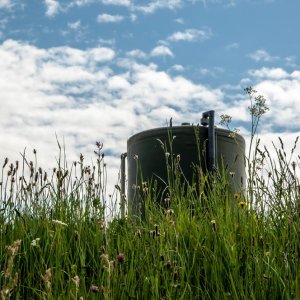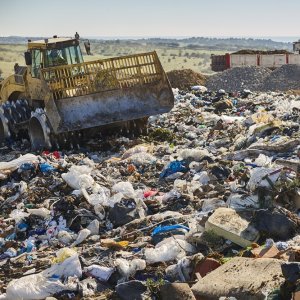What Challenges Does Decarbonization Represent for Companies?

STORY INLINE POST
When a company decides to define objectives under the Science Based Target (SBT), CDP or RE100 methodology, commitments are made not only to decarbonization goals but also to changes in culture. This implies changes in strategy and changes in habits, all carried out by people. As the climate emergency is becoming more and more evident, actions taken need to be very effective. I would like to take some time to share three important points: the alternatives available to accompany companies on the path they take, the technology available and what kind of competencies and skills will be required from leaders throughout the process.
As the industrial sector is responsible for 30 percent of the total carbon emissions released into the atmosphere, it is urgent to start working to reduce them. According to the International Energy Agency[1] global CO2 emissions from energy combustion and industrial processes rebounded in 2021 to reach their highest ever annual level of 36.3 gigatons (Gt). These numbers show that achieving our Paris Agreements commitments requires extreme measures from the industrial sector.
Heavy industries, which are the most energy demanding and include petrochemical, metallurgical, glass, chemical, cement and power generation, in 2019 were responsible for 237 MTon of CO2 eq in Mexico, according to data provided by the Mexican Hydrogen Association[2].
The available solutions are:
- Energy efficiency strategies. Identify opportunities to reduce or eliminate energy consumption in processes and buildings.
- Use of renewable energy sources. In the short and medium term, natural gas allows the mitigation of pollution from fossil fuels in thermal processes and renewable electrical energy provides an excellent solution for all electricity-driven applications. In the long term, green gases that will replace natural gas will also provide an alternative, such as biogas or green H2. Today, according to the Global Gas Report 2022[3] , the production of green H2 and biomethane is less than 1 percent of the total demand required.
- Carbon Capture and Storage (CCUS). Through technologies that allow the capture of CO2 emitted in the processes and its storage or reuse in other processes in the beverage and food, chemical and mining industries. According to the same report3, to reach the 1.5° C scenario, this solution should be scaling up to 8 Gt by 2050, considering that today it only allows the capture of around 45 million tons per year.
For the industrial sector, CCUS represents an opportunity as a way to recover the CO2 emitted in processes after the burning of fossil fuels or chemical reactions in various industrial processes. The cost of capturing and transporting this CO2 still makes the cost benefit of this option unattractive. Seeking to build ecosystems that allow the optimization of the use of these resources will be critical in addition to the development of the technology to lower the costs that will allow it to be used more widely. Another factor to consider will be the cost of carbon emissions versus carbon recovery. The emergence of new taxes, such as those in geographic zones like Queretaro, will drive behavior and investments, opening the consideration of different technological alternatives.
As shown in the figure below from Rystad Energy, another alternative may be green hydrogen.

Sustainability Leadership
Technology is only one variable. The real change will come from those of us who work in and lead the industries whose goals are to respond quickly and with determination to the climate emergency. In a volatile, uncertain, complex and ambiguous world, the skills and competencies expected of a leader have evolved.
When the 17 UN Sustainability Goals were defined in the 2030 Agenda in 2015, countries pledged to eliminate poverty, combat climate change, advocate for making education accessible, pursue women’s equality and environmental stewardship.
In 2021, the first publication of the nonprofit organization Inner Development Goals (IDGs) was issued, sharing the vision compiled by international researchers in two surveys and through conferences held with more than 3,000 stakeholders during the various processes where the skills that must be developed, if we want to achieve these sustainability goals, are identified.
The IDGs’ framework consists of five categories organizing 23 skills and qualities of human inner growth and development.[4]

Being - Relationship to Self
Cultivating our inner life and developing and deepening our relationship to our thoughts, feelings and body help us be present, intentional, and non-reactive when we face complexity.
Thinking - Cognitive Skills
Developing our cognitive skills by taking different perspectives, evaluating information and making sense of the world as an interconnected whole is essential for wise decision-making.
Relating - Caring for Others and the World
Appreciating, caring for and feeling connected to others, such as neighbors, future generations or the biosphere, helps us create more just and sustainable systems and societies for everyone.
Collaborating - Social Skills
To make progress on shared concerns, we need to develop our abilities to include, hold space and communicate with stakeholders with different values, skills and competencies.
Acting - Driving change
Qualities such as courage and optimism help us acquire true agency, break old patterns, generate original ideas and act with persistence in uncertain times.
It would be difficult to go into detail on each of them but it is worthwhile for those who are interested to consult the complete report indicated in the reference.
The challenge is great and will require us to get out of our comfort zone, to be disruptive not only with technology but also in the way we will manage change in our organizations in order to be ready for the challenges brought by the climate emergency and the search for sustainability. But it is a great opportunity for those who manage to adapt. I’ll leave on the table the same question that was put to me a few days ago: What will be your contribution to achieve this?
[1] https://iea.blob.core.windows.net/assets/c3086240-732b-4f6a-89d7-db01be018f5e/GlobalEnergyReviewCO2Emissionsin2021.pdf
[2] https://h2lac.org/archivos/hidrogeno-verde-el-vector-energetico-para-descarbonizar-la-economia-de-mexico/








 By Ana Laura Ludlow | VP Chief Government Affairs & Sustainability Officer -
Fri, 07/08/2022 - 09:00
By Ana Laura Ludlow | VP Chief Government Affairs & Sustainability Officer -
Fri, 07/08/2022 - 09:00
















